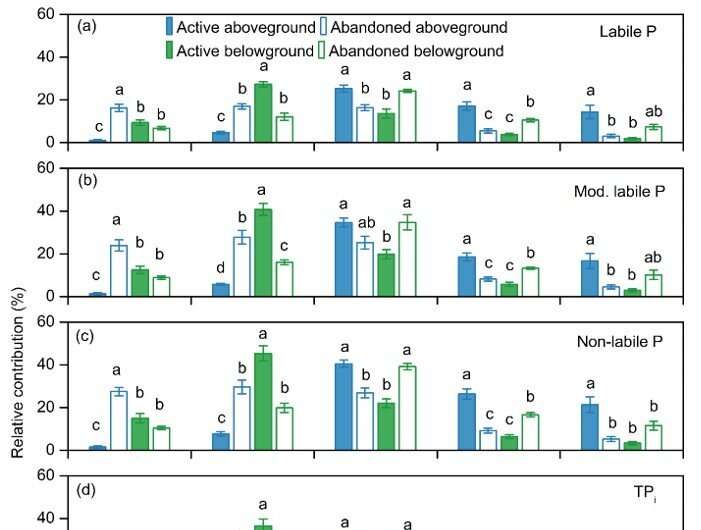This article has been reviewed according to Science X's editorial process and policies. Editors have highlighted the following attributes while ensuring the content's credibility:
fact-checked
trusted source
proofread
Termite activity promotes phosphorous availability in rubber plantations

Termites are social insects of the infraorder Isoptera and are widely distributed across tropical and subtropical ecosystems. These insects are the most important soil bioturbators and have been called "soil engineers." Phosphorus concentrations are usually low in highly weathered tropical acid soils, but termite nests form bioaggregates that serve as carriers for P protection and stabilization. However, few studies have focused on the changes in the composition and availability of aggregate-associated phosphorous within termite mounds.
In a study published in Plant and Soil, researchers from the Xishuangbanna Tropical Botanical Garden (XTBG) of the Chinese Academy of Sciences showed that the presence or absence of fungus-growing termite nesting had contrasting effects on soil aggregate stability and distribution of aggregate-associated phosphorous fractions in a mature rubber plantation.
The researchers studied fungus-growing termite mounds (active and abandoned), both above- and below ground, in a 24-year-old rubber stand. They then measured the mass distribution and stability of the aggregates and the phosphorous-fraction concentrations in soil aggregates of termite mounds, as well as their correlations with key chemical properties.
Active belowground chambers showed greater stability and less erodibility due to more aggregates > 1 mm in size than aboveground mounds. In active aboveground mounds, the concentrations of labile P and non-labile phosphorous were higher than in other types. However, H2O-Pi and NaHCO3-Pi in most aggregates were enriched in active belowground chambers relative to aboveground ones.
Furthermore, middle-sized aggregates (0.25–2 mm) stored more phosphorous and represented the highest phosphorous storage capacity, especially for active belowground chambers.
The results suggest that although termite activity reduces aggregate stability above ground, the effect of promoting phosphorous availability is beneficial.
"Our study provides an important reason why mound soils can be considered as fertility amendments for agroforestry practices in phosphorous-deficient tropical soils," said Liu Chengang of XTBG.
More information: Fangmei Lin et al, Termite mounds affect soil aggregate stability and aggregate-associated phosphorus forms in a tropical rubber plantation, Plant and Soil (2023). DOI: 10.1007/s11104-023-05880-4
Provided by Chinese Academy of Sciences





















